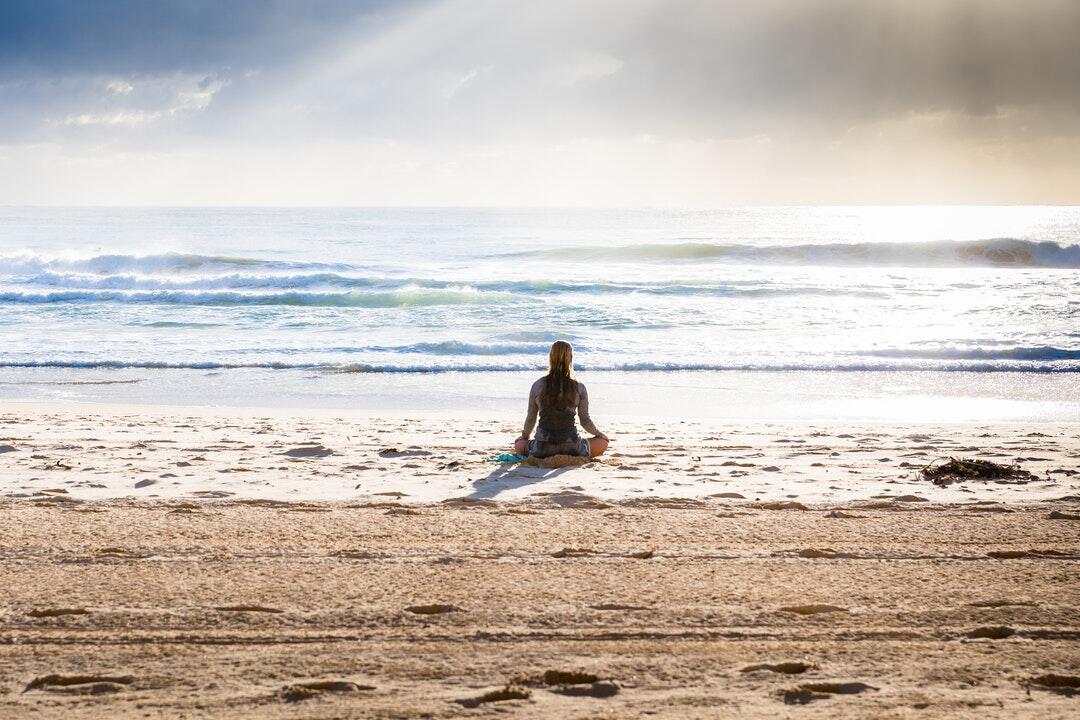
Meditation is becoming increasingly popular in America, with over 18% of the population partaking in some form of meditation practice.
For thousands of years and in nearly every culture, people have meditated to better understand life and living. In the frantic and anxious modern world, it’s a great way to slow down and reset your mind.
Books and media will make meditation sound easy. You sit there in silence and notice everything – sights, sounds, sensations, and thoughts – floating in and out of your consciousness. In learning how to reach new limits while meditating, however, you’ll realize just how distracted you are, which can be simultaneously liberating and daunting.
Today, we’ll give you a few deep meditation techniques to elevate your practice and improve your skills. Keep reading and deepen your meditation concentration.
Focus on Your Breath
This isn’t exactly an advanced meditation technique – breathing is a key part of basic and advanced meditation alike – but we must stress the role of the breath. As soon as you start practicing, you’ll realize that noticing your breath isn’t so simple.
The breath is like an anchor for your meditation practice. Paying attention to it is enough to take you as far as you want to go, but few people can really pay attention to it for more than a minute or two.
Start your practice by noticing your breath at a single point – the tip of your nose, your chest, or deep in your diaphragm – and silently count each in and out breath until you get to ten, then start over. You’ll quickly see that your thoughts start distracting you after only a few breaths.
You can always begin your practice with the breath. Over time, you’ll be able to stay focused on it for longer and enter a deeper meditation concentration.
Practice Attentive Listening
Many beginners will prefer to meditate with their eyes closed for various reasons. The reason for keeping them open is to create a meditative state enhancement by avoiding the distracting inner images that your mind can generate. That said, closed-eyes meditation provides a great opportunity to practice attentive listening.
As you get better at focusing on your breath, you’ll create more mental space for other things. For most, thoughts will start to intervene in your practice, which isn’t necessarily a bad thing, as we’ll discuss momentarily. A good way to subvert distractions is to pay extremely close attention to the sounds that come and go.
Don’t just hear the sounds, notice the sounds. Whether it’s a bird chirping or the garbage truck driving by, let the sounds enter your consciousness and leave again, but don’t try to grasp them. This is a great way to improve your mindfulness practice.
Notice Your Sensations
The same is true of sensations. You may be sitting in a chair, kneeling on a stool, or sitting on a zafu while you meditate. Whatever it is, you can use the feeling of sitting to begin noticing the sensations you feel in your body.
This is a great way to start your practice. Simply notice how your bottom feels against the seat, then how your legs and feet feel against the floor. You’ll also start to notice slight tingles in the body, as well as temperature changes, aches, and the breeze brushing against your skin.
Eventually, the form of your body will start to disappear and be replaced with a kind of cloud of sensation. When you lose the sense of your boy, you can get deeper into the meditative state because you’re less aware of the human body that you normally reside in.
Don’t Grasp Thoughts
Beginners and non-meditators often think that the goal of meditation is to stop thinking. The real goal is to stop grasping at thoughts when they do arise.
Everyone has a constant dialogue going on with their own mind. You may randomly start thinking about something that happened with your mother 15 years ago, and then a few seconds later, you’ll be thinking about the way the barista looked at you when you ordered your latte. For most people, this is just what the inner life consists of.
Meditation teaches you to notice the inevitability of thoughts and the lack of control we have over them. It teaches us that, like sounds, sights, and sensations, thoughts arise and disappear on their own. By disengaging from them, we can create more peace in our lives.
So, how do you work on this during meditation? Simply treat them the same you would any other phenomenon. Notice them when they arise, look at them, and watch them dissipate into the thin air of your consciousness.
Look for Your Self
Advanced meditation leads you down a path of understanding that breaks down the walls of identity and selfhood that we build up throughout our lives. An important part of the meditation journey is recognizing that the self as you know it doesn’t exist.
As we mentioned above, when you start to take a closer look at your thoughts, they’ll disappear just as quickly as they arrive, leaving a bit of a void behind. Just as you do with thoughts, try to look for the thing generating the thoughts. Who or what is causing these things to arise and fall away?
It’ll take time, but you’ll eventually see that what you’re looking for isn’t there. The self – the person who you believe yourself to be/identify as – is as precarious as a thought or sensation. As long as you’re open to it, this is the liberation that can help you lead a happier life.
How to Reach New Limits While Meditating
Learning how to reach new limits while meditating is all about practice. Meditation masters spend countless years meditating constantly before they reach their ultimate goal. The good thing is that you don’t need to become a master to experience the benefits of meditation.
Use these techniques and you’ll notice meaningful positive change in the way you operate in the world. At ChiroThin, we believe that mental and physical health are deeply intertwined. Click here to find a ChiroThin doctor near you to help you get started on your weight loss journey.
